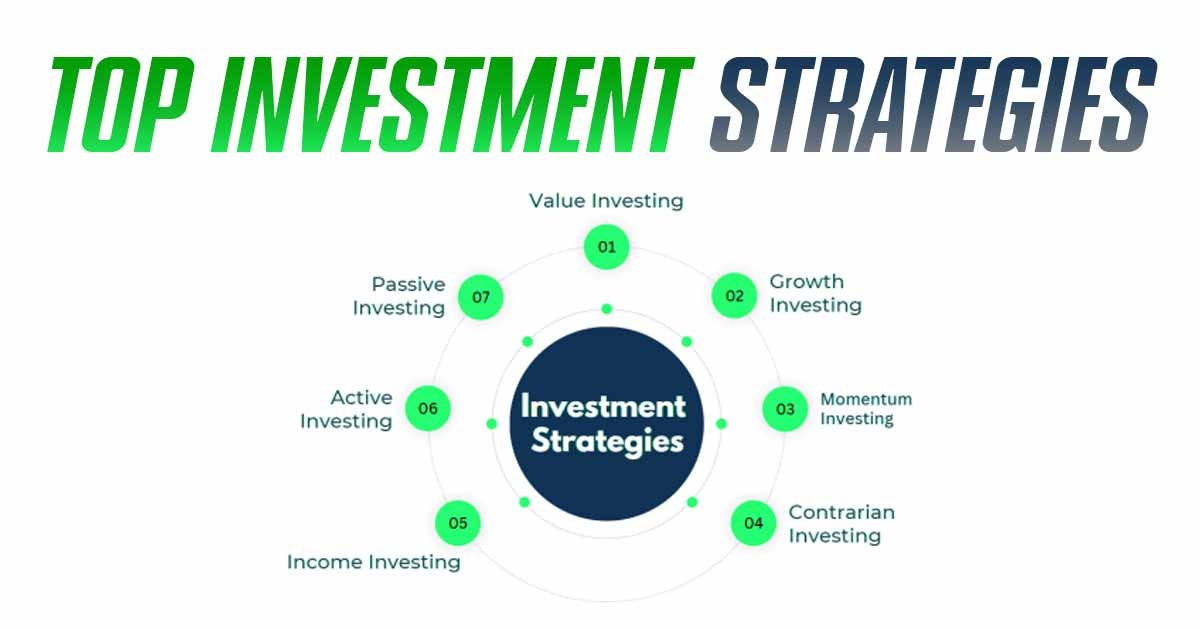Investing is a powerful way to build wealth over time, but for beginners, it can seem overwhelming. With a solid understanding of basic investment strategies, you can make informed decisions that align with your financial goals. This guide will cover the top investment strategies for beginners, providing you with the knowledge to start your investing journey confidently.
Why Invest?
Before diving into strategies, it’s important to understand why investing is essential:
- Wealth Building: Investing allows your money to grow over time, outpacing inflation.
- Passive Income: Investments can generate additional income streams through dividends, interest, and capital gains.
- Financial Security: Long-term investing can help secure your financial future, providing funds for retirement, education, and major life events.
Getting Started with Investing
Before choosing an investment strategy, consider these initial steps:
- Set Financial Goals: Determine what you want to achieve with your investments. Are you saving for retirement, a home, or simply looking to grow your wealth?
- Assess Risk Tolerance: Understand your comfort level with risk. This will influence your investment choices.
- Educate Yourself: Learn the basics of investing, including different types of assets, market operations, and common investment terms.
Top Investment Strategies for Beginners
- Buy and Hold
- Overview: The buy and hold strategy involves purchasing stocks or other securities and holding them for a long period, regardless of market fluctuations.
- Benefits: This strategy is based on the belief that markets tend to rise over the long term. It minimizes transaction costs and reduces the emotional stress of frequent trading.
- Implementation: Identify quality stocks or funds with strong fundamentals and growth potential. Hold onto these investments through market ups and downs.
- Dollar-Cost Averaging
- Overview: Dollar-cost averaging involves investing a fixed amount of money at regular intervals, regardless of the market price of the investment.
- Benefits: This strategy reduces the impact of market volatility and lowers the risk of investing a large sum at an inopportune time.
- Implementation: Set up automatic investments in a diversified portfolio, such as index funds or ETFs, on a monthly or quarterly basis.
- Index Fund Investing
- Overview: Index funds are mutual funds or ETFs that track a specific market index, such as the S&P 500.
- Benefits: They offer broad market exposure, low fees, and consistent returns that mirror the overall market performance.
- Implementation: Choose reputable index funds with low expense ratios and invest regularly through your brokerage account.
- Dividend Investing
- Overview: Dividend investing focuses on buying stocks that pay regular dividends, providing a steady income stream.
- Benefits: Dividends can be reinvested to purchase more shares, compounding your returns over time.
- Implementation: Research and select dividend-paying stocks with a history of stable or increasing payouts. Reinvest dividends through a dividend reinvestment plan (DRIP).
- Robo-Advisors
- Overview: Robo-advisors are automated platforms that create and manage a diversified portfolio based on your risk tolerance and financial goals.
- Benefits: They offer low-cost, hands-off investing with professional management and rebalancing.
- Implementation: Sign up with a reputable robo-advisor service, complete a risk assessment questionnaire, and fund your account.
- Growth Investing
- Overview: Growth investing involves buying stocks of companies expected to grow at an above-average rate compared to other companies.
- Benefits: Growth stocks can offer substantial returns, especially in rapidly expanding industries like technology.
- Implementation: Identify companies with strong earnings growth, innovative products, and expanding market share. Be prepared for higher volatility and risk.
- Value Investing
- Overview: Value investing focuses on finding undervalued stocks that are trading below their intrinsic value.
- Benefits: This strategy aims to buy low and sell high, capitalizing on market inefficiencies.
- Implementation: Use financial ratios like the P/E ratio and price-to-book ratio to identify undervalued stocks. Conduct thorough research to ensure the company’s fundamentals are strong.
- Real Estate Investment Trusts (REITs)
- Overview: REITs are companies that own, operate, or finance income-producing real estate. They offer a way to invest in real estate without buying property.
- Benefits: REITs provide regular income through dividends and offer diversification away from traditional stocks and bonds.
- Implementation: Research and select publicly traded REITs or REIT ETFs that match your investment goals and risk tolerance.
- Sector Investing
- Overview: Sector investing involves focusing on specific industry sectors that you believe will outperform the overall market.
- Benefits: This strategy allows you to capitalize on trends and growth in particular industries.
- Implementation: Choose sector-specific ETFs or mutual funds that align with your market outlook and investment strategy.
- Balanced Portfolio
- Overview: A balanced portfolio strategy involves diversifying your investments across various asset classes, such as stocks, bonds, and cash.
- Benefits: Diversification reduces risk and volatility while providing potential for growth and income.
- Implementation: Allocate your investments according to your risk tolerance and financial goals, regularly rebalancing to maintain your desired asset mix.
Conclusion
Investing in the stock market can seem intimidating, but with the right strategies, you can build a solid foundation for your financial future. Whether you choose to buy and hold, dollar-cost average, or explore dividend investing, the key is to start with a clear plan and stay committed to your goals. Remember to diversify your portfolio, stay informed, and be patient—investing is a marathon, not a sprint.
By following these top investment strategies for beginners, you’ll be well on your way to achieving your financial objectives and growing your wealth over time.
